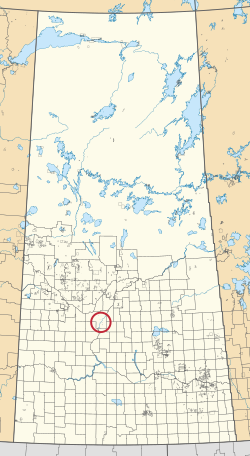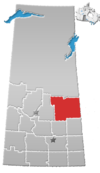Quill Lake is a village in the Canadian province of Saskatchewan within the Rural Municipality of Lakeside No. 338 and Census Division No. 10. It is 170 km east of Saskatoon and 200 km northeast of Regina.
One Arrow First Nation is a Cree First Nations band government in Bellevue, Saskatchewan, Canada. Its main reserve is located just south of Batoche near the South Saskatchewan River about 100 km (62 mi) north-east of Saskatoon. The One Arrow First Nation's reserve is in the aspen parkland biome. It is bordered by the rural municipalities of St. Louis No. 431, Fish Creek No. 402, and Duck Lake No. 463.
Yellow Quill First Nation (formerly Nut Lake Band of Saulteaux) is a Saulteaux First Nation band government in Saskatchewan, Canada. Their reserve is twenty kilometres northwest of Kelvington. The Yellow Quill First Nation is a signatory of Treaty No. 4, which was signed by Chief Yellow-quill on August 24, 1876.
Fishing Lake First Nation is a First Nation of the Saulteaux branch of the Ojibwe nation. Fishing Lake First Nation are Anishinabek people. The band can trace their origins to central Canada, and were pushed westward to avoid encroachment by European settlers. The First Nation was originally part of the Yellow-quill Saulteaux Band, a Treaty Band named after a Treaty 4 signatory Chief Ošāwaškokwanēpi, whose name means "Green/Blue-quill." However, due to "š" merging with "s" in Nakawēmowin, this led to a mistranslation of his name as "Yellow-quill"—"yellow" being osāw-, while "green/blue" being ošāwaško-. The band was given three reserves, at Fishing and Nut Lakes and Kinistino, Saskatchewan. The Fishing Lake Indian Reserve 89 was approximately 22,850 acres (92.5 km2). Soon after the death of Chief Ošāwaškokwanēpi, the Band divided into three groups, the Fishing Lake First Nation, the Yellow Quill First Nation, and the Kinistin Saulteaux Nation

The Kinistin Saulteaux Nation is a Saulteaux band government in Saskatchewan. Their reserve is 39 kilometres (24 mi) southeast of Melfort. The Kinistin Saulteaux Nation is a signatory of Treaty No. 4, which was signed by Chief Yellow-quill on August 24, 1876.

The Treaty Four Reserve Grounds 77 are an Indian reserve in Saskatchewan, Canada, shared by 33 band governments from Saskatchewan and Manitoba. The Reserve Grounds are located adjacent to and west of Fort Qu'Appelle. In the 2016 Canadian Census, they recorded a population of 15 living in 6 of their 8 total private dwellings.
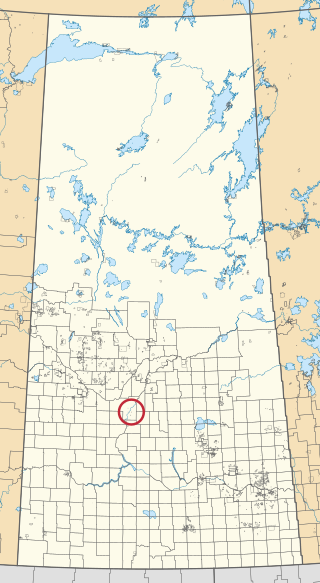
Asimakaniseekan Askiy 102A is an Indian reserve of the Muskeg Lake Cree Nation in Saskatchewan. An urban reserve, it is located in the city of Saskatoon.

Asimakaniseekan Askiy 102B is an Indian reserve of the Muskeg Lake Cree Nation in Saskatchewan. An urban reserve, it is located in the city of Saskatoon.

Beardy's 97 and Okemasis 96 is an Indian reserve of the Beardy's and Okemasis' Cree Nation in Saskatchewan. It is 58 kilometres southwest of Prince Albert. In the 2016 Canadian Census, it recorded a population of 1323 living in 301 of its 311 total private dwellings. In the same year, its Community Well-Being index was calculated at 52 of 100, compared to 58.4 for the average First Nations community and 77.5 for the average non-Indigenous community.

Fishing Lake 89 is an Indian reserve of the Fishing Lake First Nation in Saskatchewan. It is 119 kilometres (74 mi) north of Fort Qu'Appelle. In the 2016 Canadian Census, it recorded a population of 406 living in 128 of its 161 total private dwellings. In the same year, its Community Well-Being index was calculated at 54 of 100, compared to 58.4 for the average First Nations community and 77.5 for the average non-Indigenous community.

Muskeg Lake 102 is an Indian reserve of the Muskeg Lake Cree Nation in Saskatchewan. It is about 493 kilometres (306 mi) north of Saskatoon. In the 2016 Canadian Census, it recorded a population of 274 living in 104 of its 112 total private dwellings. In the same year, its Community Well-Being index was calculated at 57 of 100, compared to 58.4 for the average First Nations community and 77.5 for the average non-Indigenous community.
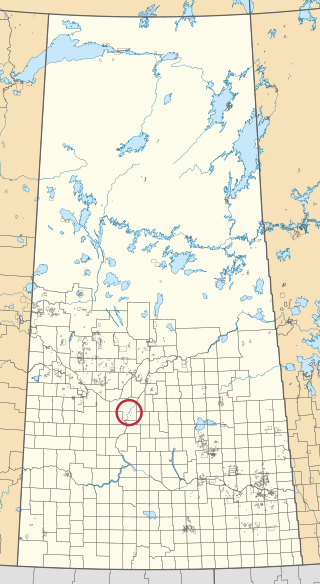
The Nakaway Ahkeeng Reserve is an Indian reserve of the Yellow Quill First Nation in Saskatchewan. It is in the city of Saskatoon.

One Arrow 95 is an Indian reserve of the One Arrow First Nation in Saskatchewan. It is about 53 kilometres (33 mi) south-west of Prince Albert. In the 2016 Canadian Census, it recorded a population of 680 living in 163 of its 168 total private dwellings. In the same year, its Community Well-Being index was calculated at 49 of 100, compared to 58.4 for the average First Nations community and 77.5 for the average non-Indigenous community.

One Arrow 95-1A is an Indian reserve of the One Arrow First Nation in Saskatchewan. It is about 27 kilometres (17 mi) north-east of Hague. In the 2016 Canadian Census, it recorded a population of 10 living in 2 of its 2 total private dwellings.
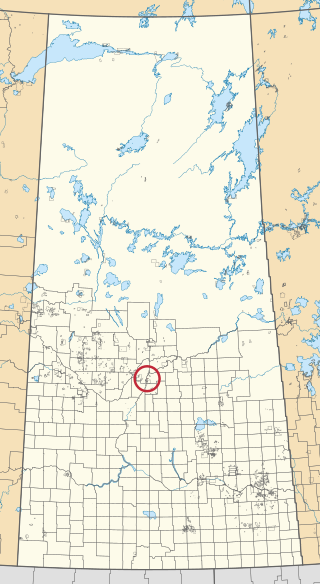
One Arrow 95-1D is an Indian reserve of the One Arrow First Nation in Saskatchewan. It is about 11 kilometres (6.8 mi) east of Duck Lake. In the 2016 Canadian Census, it recorded a population of 0 living in 1 of its 1 total private dwellings.

Yellow Quill 90 is an Indian reserve of the Yellow Quill First Nation in Saskatchewan on the eastern shore of Nut Lake. It is about 19 kilometres (12 mi) north-west of Kelvington. In the 2016 Canadian Census, it recorded a population of 436 living in 110 of its 121 total private dwellings. In the same year, its Community Well-Being index was calculated at 45 of 100, compared to 58.4 for the average First Nations community and 77.5 for the average non-Indigenous community.

Yellow Quill 90-8 is an Indian reserve of the Yellow Quill First Nation in Saskatchewan. It is about 27 kilometres (17 mi) north of Kelvington.

Yellow Quill 90-9 is an Indian reserve of the Yellow Quill First Nation in Saskatchewan, Canada. In the 2016 Canadian Census, it recorded a population of 50 living in 14 of its 15 total private dwellings.

Yellow Quill 90-11 is an Indian reserve of the Yellow Quill First Nation in Saskatchewan.

Yellow Quill 90-18 is an Indian reserve of the Yellow Quill First Nation in Saskatchewan.
